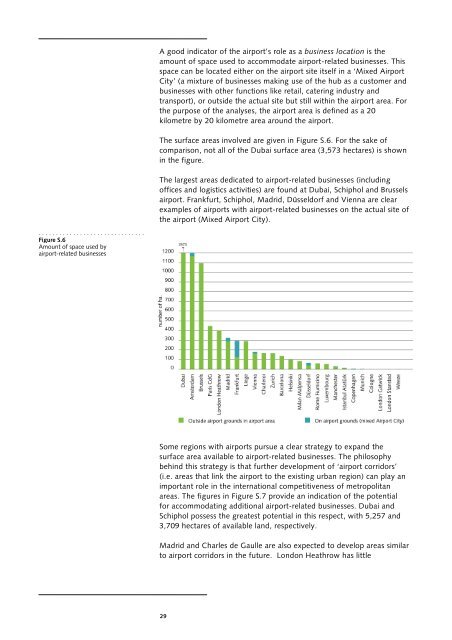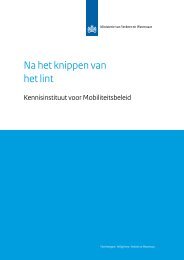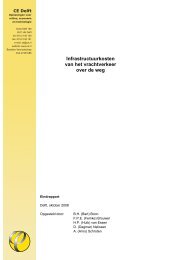Internationale benchmark capaciteit luchthavens - Kennisinstituut ...
Internationale benchmark capaciteit luchthavens - Kennisinstituut ...
Internationale benchmark capaciteit luchthavens - Kennisinstituut ...
You also want an ePaper? Increase the reach of your titles
YUMPU automatically turns print PDFs into web optimized ePapers that Google loves.
. . . . . . . . . . . . . . . . . . . . . . . . . . . . . . .<br />
Figure S.6<br />
Amount of space used by<br />
airport-related businesses<br />
A good indicator of the airport’s role as a business location is the<br />
amount of space used to accommodate airport-related businesses. This<br />
space can be located either on the airport site itself in a ‘Mixed Airport<br />
City’ (a mixture of businesses making use of the hub as a customer and<br />
businesses with other functions like retail, catering industry and<br />
transport), or outside the actual site but still within the airport area. For<br />
the purpose of the analyses, the airport area is defined as a 20<br />
kilometre by 20 kilometre area around the airport.<br />
The surface areas involved are given in Figure S.6. For the sake of<br />
comparison, not all of the Dubai surface area (3,573 hectares) is shown<br />
in the figure.<br />
The largest areas dedicated to airport-related businesses (including<br />
offices and logistics activities) are found at Dubai, Schiphol and Brussels<br />
airport. Frankfurt, Schiphol, Madrid, Düsseldorf and Vienna are clear<br />
examples of airports with airport-related businesses on the actual site of<br />
the airport (Mixed Airport City).<br />
Some regions with airports pursue a clear strategy to expand the<br />
surface area available to airport-related businesses. The philosophy<br />
behind this strategy is that further development of ‘airport corridors’<br />
(i.e. areas that link the airport to the existing urban region) can play an<br />
important role in the international competitiveness of metropolitan<br />
areas. The figures in Figure S.7 provide an indication of the potential<br />
for accommodating additional airport-related businesses. Dubai and<br />
Schiphol possess the greatest potential in this respect, with 5,257 and<br />
3,709 hectares of available land, respectively.<br />
Madrid and Charles de Gaulle are also expected to develop areas similar<br />
to airport corridors in the future. London Heathrow has little<br />
29




